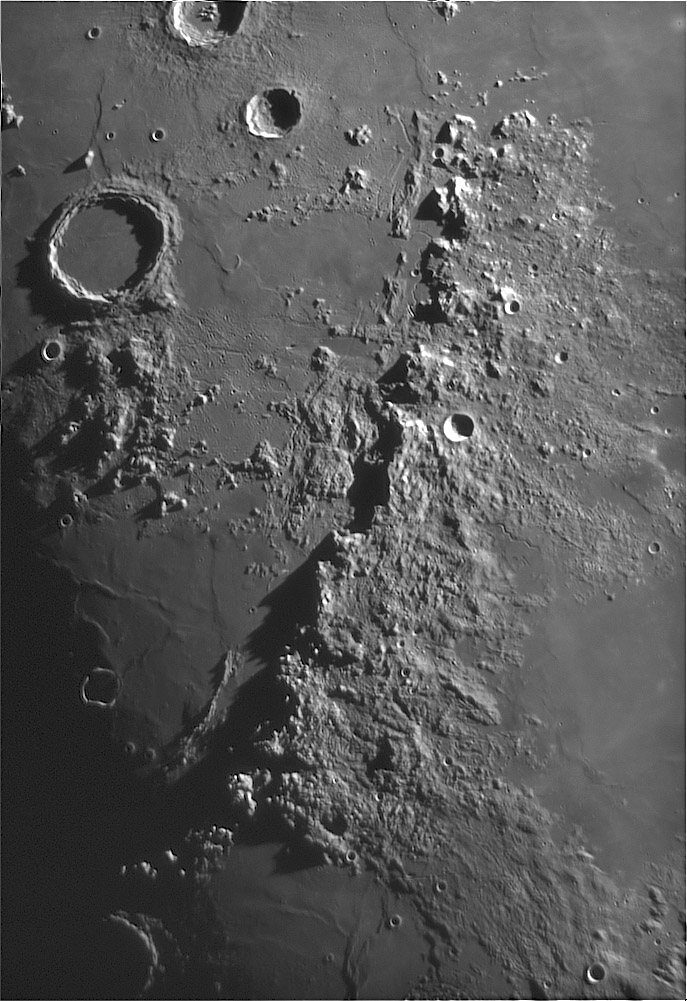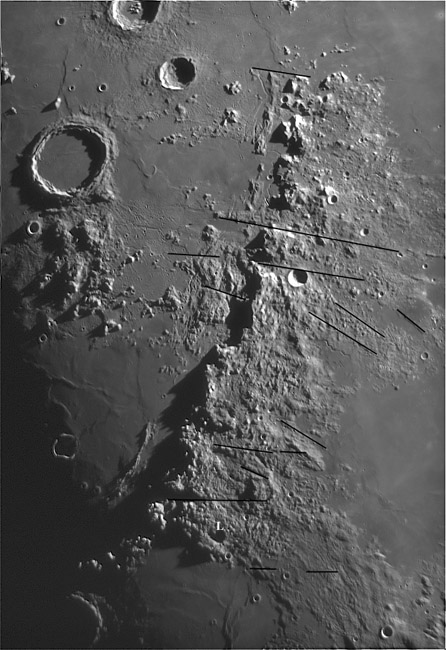July 23, 2018
A Museum Piece
Originally published May 6, 2009

image by Jocelyn Sérot, France
 |
Jocelyn reports that the seeing was poor when this image was acquired but you would never know that from the magnificent view. The Apennine Mountains are the best impact basin rim we can see from Earth. Remember that originally Serenitatis, Tranquillitatis, Crisium, Nectaris, Humorum, Nubium and all the other little basins were at least partially surrounded by massive ejecta deposits like this (scaled down according to their diameters). Only Orientale has such a well preserved massive deposit (as well it should since it is younger than Imbrium!) but it is placed poorly for Earthly observers. What happened to all the other Apennines is that they were shaken, scoured, cratered and covered by mare lavas. Back in the 1960s and 70s the US Geological Survey mapped the remnants of these once mighty ejecta deposits but they are difficult to recognize without careful study. So we should appreciate the Apennines as a museum piece, a nearly pristine example of a thick and uplifted basin deposit. But it is more complicated than we can understand. The straight lines I've drawn on the smaller version show some of the places it was forced apart, perhaps laterally or vertically shifted, when it was formed and as it modified itself as rim collapse occurred. There are many other interesting objects to observe, especially all the small rilles, but I am always fascinated by the pit crater-like, shadow-filled feature called Marco Polo L at the south end of the Apennine ejecta.
Yesterday's LPOD: Smaller And Smaller Rilles Tomorrow's LPOD: A Rille That Doesn't Know What To Do with Itself
COMMENTS?Register, Log in, and join in the comments.
|



